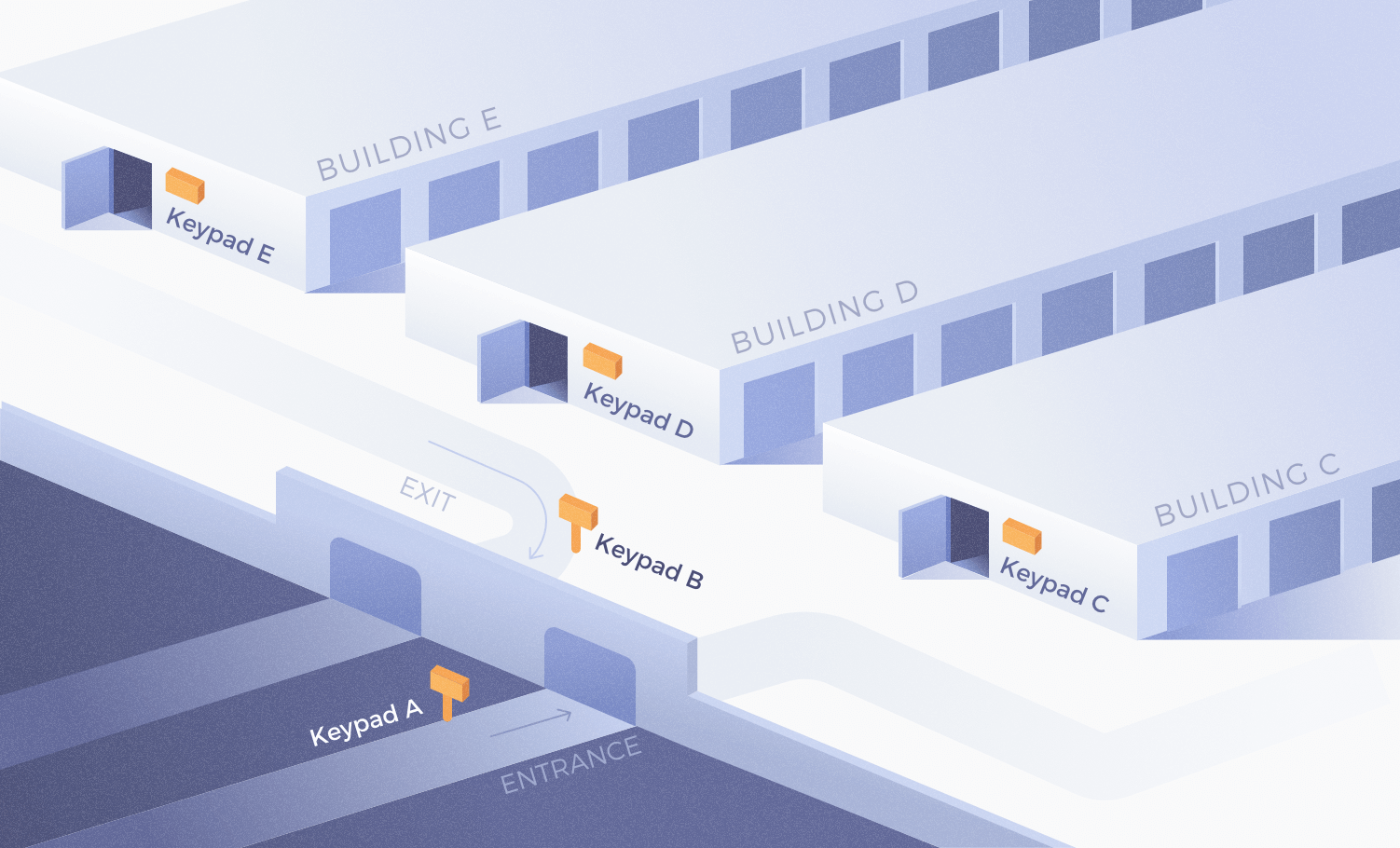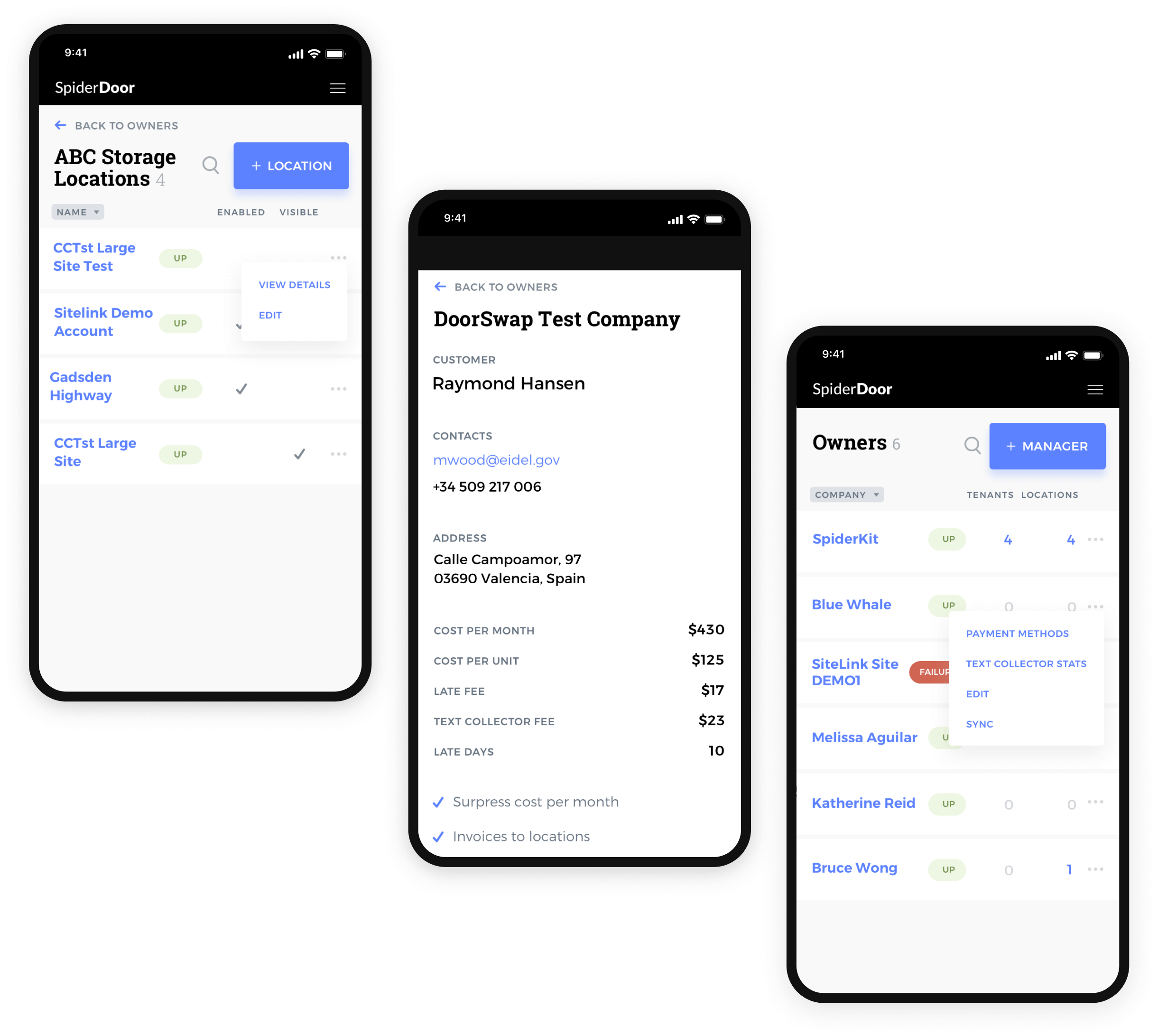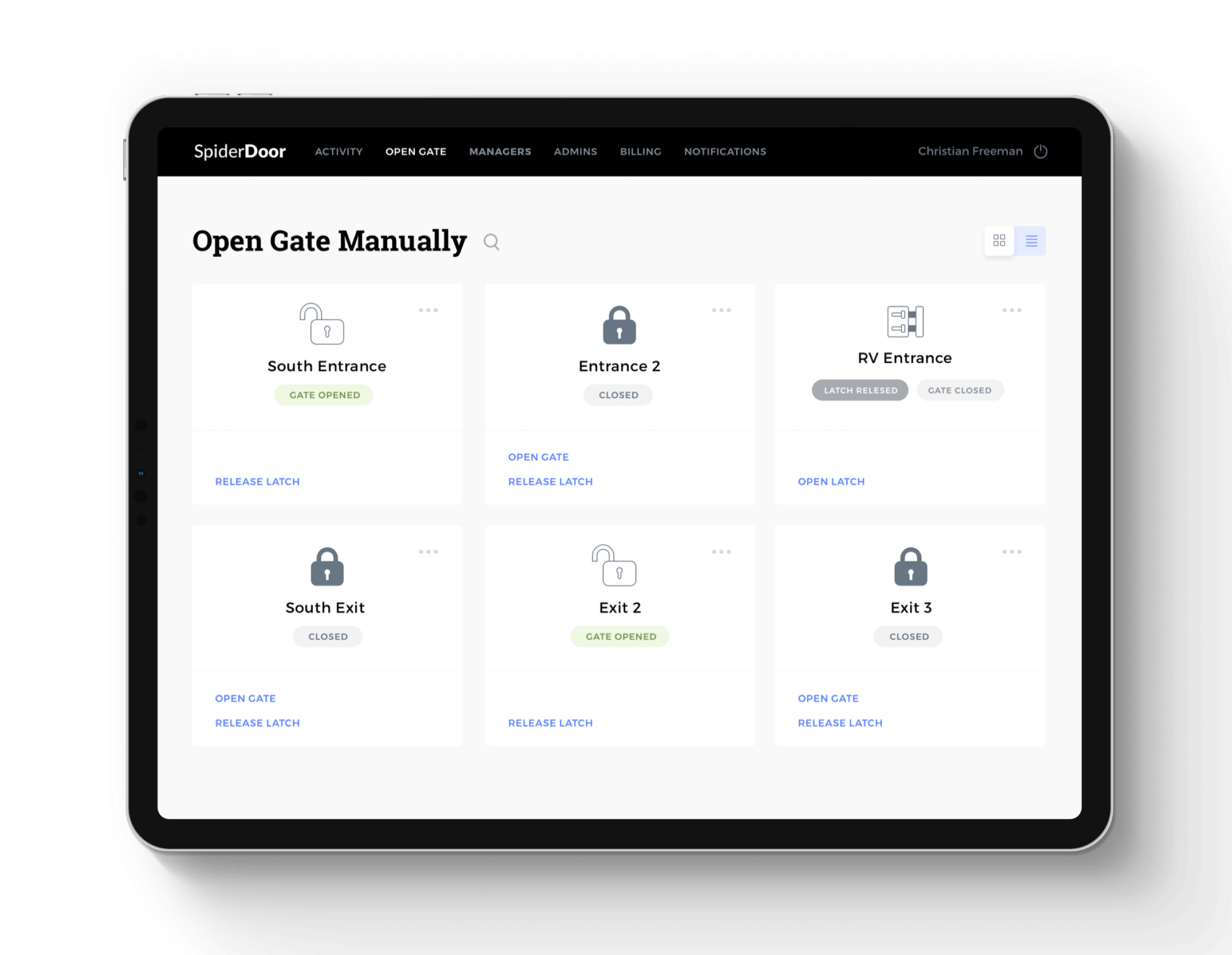SpiderDoor Self-storage management system
SpiderDoor self-storage management software takes your storage management to the new level. Let your tenants manage their units with ease by offering them keypad integration, push/text notification, and more.

Integrations
QuikStor, DoorSwap,
StorageCommander and SiteLink
Killer-features
documents management with eSign, payment processing, seamless access control with keypad integration
The story behind
Storage facility managers need to manage units and tenants responsible for the goods stored in those units. They also collect charges for these units, including debts and advance payments, control access and let tenants in and out, lock-out tenants if the payment is overdue, and do the general facility management. As self-storage facilities grow, managers struggle running across the location to unlock doors or print a lease. Storage management also involves time-consuming accounting, and a lot more. All these manual tasks are simply waiting to be automated!
The initial idea of the SpiderDoor project was to unite via APIs the various accounting systems used by self-storage businesses. The customer, Aaron Harwell, the owner of Safeguard Storage location in Trussville, Alabama, wanted the collected data to be routed through a common interface to user-friendly mobile apps instead of a traditional warehouse software.
The SpiderDoor project was launched in September 2016. Initially, Aaron Harwell worked with a Blue Whale Apps Development company whose developers collaborated with Anadea on the Zillow project. The new project evolved over a few months, so Blue Whale managers decided they need help from a solid back-end engineering team specialized in third-party integration and database optimization. Anadea steps in and gets to work.

Team effort
The back-end was covered by more than 600 automated use cases, so the development team started by covering the code base by all types of automated tests and refactoring the database structure. Then we moved the third-party services integration to the background and switched it from real-time API calls to a subtle synchronization that was pulling all data from the management software into SpiderDoor database before using it in the app flow. This reduced the number of API calls to ~250 calls per day at each location and increased the mobile API response speed from 4-8 seconds to 30 milliseconds.
The services integrated first were QuikStor, DoorSwap, StorageCommander and SiteLink. In order to implement the planned features, we had to extract the data out of the self-storage management software. This required the design and development of a sophisticated background synchronization schedule. This mechanism aggregated the data and stored in the internal database to be used for further development of other unique features.
Challenges
The web front-end of SpiderDoor is mostly designed for warehouse managers that can control separate locations and groups of locations. They can adjust SpiderDoor settings, send notifications, and monitor respective dashboards.
End users (location tenants) can use Android and iOS apps to view their units and contents, submit incident reports, pay for their debts or pay in advance, and open the gates they have access to. In addition to the killer-features described above, there were other technical challenges we successfully solved while working on SpiderDoor.
The biggest challenge was the background synchronizer designed to pull a large amount of data from third-party management software every 15 minutes, plus even more data every night, convert it to the convenient structures, and push it to keypads and other targets.

More than just a solution
SpiderDoor received a very in-demand functionality with a significant number of users. Attention to SpiderDoorAfter is proved in mass media and market success:
Over 140
keypads that are constantly synchronized with the management software
500+
active self-storage locations using SpiderDoors iOS and Android apps in the United States and Canada
123,000+
of which are occupied by tenants
7,000+
of which are active users
140,000+
units
Features
SpiderDoor enables tenants to rent a new unit, pay for the rent monthly, and get notified about the balance and charges applied. With SpiderDoor, the tenants could download the iOS or Android app and do everything themselves instead of calling location managers or visiting them personally.
Text Collector
The managers can monitor tenant accounts and their balance on one dashboard. Text Collector was designed to serve as a payment reminder allowing users to pay for delinquent units right after receiving the reminder. A user would get a text notification, click on the unique payment URL, see the charges applied to the unit, enter credit card details, and make the payment.
To better manage the available capacity, warehouse managers can set up the reminders to be sent on a certain day after the unit becomes delinquent. They can also see the status of both monthly and yearly payments going through the Text Collector on their dashboards.
This way, managers did not have to call tenants who forgot to pay on time and did not have to process their credit cards manually. The Text Collector makes storage management transparent for both tenants and managers.
Access control system
The next feature that became SpiderDoor's ingredient for success was the integration with keypads. Keypads installed in location gates serve several purposes. First, keypads allow certain people to move around the entire location or access only certain areas. Second, they produce activity logs so that location managers can see who is entering and leaving the buildings and when.
Just like the standard keypads, Aaron wanted the keypads to prevent the delinquent users from entering the location automatically. That task required a certain effort since it required changing gate codes as quickly as possible. The ideal scenario was: a user gets to the location, tries to enter but cannot, receives the reminder from the Text Collector or opens the app, pays for the unit, and immediately gets the access.
That kind of real-time responsiveness required SpiderDoor to pull user balance as often as every 15 minutes or less, which at first was not possible. But some API providers were so interested in this feature that they created API calls specifically for SpiderDoor. These calls gave us enough freedom to create an access control system that supported both keypad zones,when a user can access only a certain set of doors, and also the time zones.
The admin back-end (called SpiderAdmin) feature
was designed to support various admin roles. Admins can manage separate locations and groups of locations, change settings for mobile apps, send individual and group notifications to tenants, and view their Text Collector stats on a dashboard.
Flexible and transparent billing system
allows charging storage and location owners based on a custom set of SpiderDoor features they wanted to use.

Services &
Technologies
-
Third-party integration
-
Database optimization
-
Back-end development
-
Technology stack
RoR, Amazon EC2
Integrations: SiteLink API, SiteLink Reporting API, QuikStor API, DoorSwap API,Twilio API, OneSignal API, Geocoder

Just wanted to let you know once again how much I appreciate you. You have been a crucial part of getting this business up and running smoothly. I'd give anything if I had you here in our office working full time with me. I have so many other ideas and someone like you would set my mind at ease. Anyways, I just wanted to let you know how thankful I am for you.
Contact us
We are excited to hear your idea and we are always open to discuss it! Tell us a bit more about you and the project you have in mind.
Send us your request for proposal, and we'll reply with the estimate.